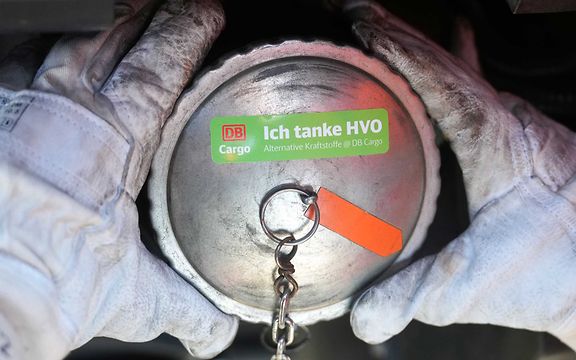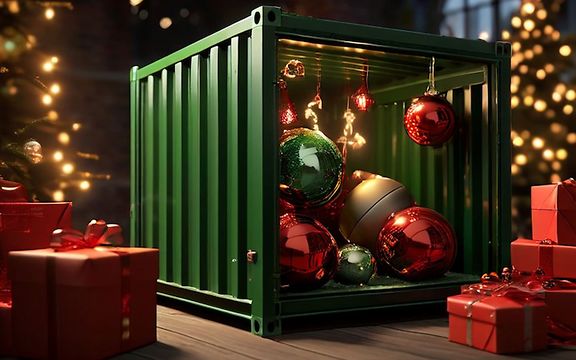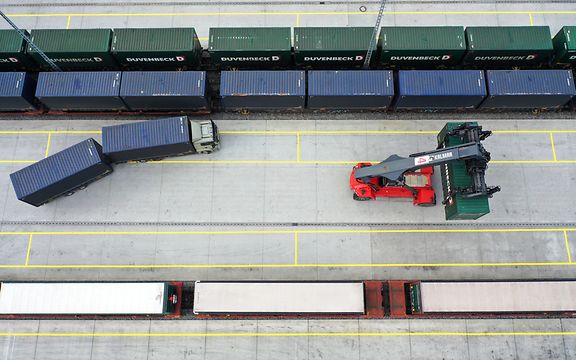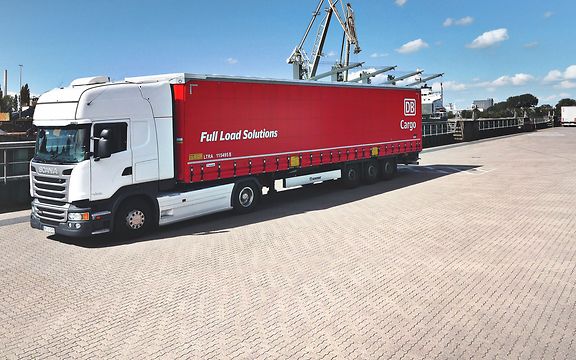DB Cargo sets course for a green future
Freight belongs on rail – and DB Cargo innovations are helping to make it happen.
Climate change is one of the most pressing issues of our time. Global warming and its consequences are the greatest challenge of this century; the decisions we make and the action we take will determine the future of our planet. The focus is on drastically reducing CO2 emissions. And this is where DB Cargo comes in, because the transport sector can greatly reduce its CO2 emissions on many levels: by shifting transport to rail and during the journey itself. That is why DB Cargo is making a number of adjustments to set the course of rail freight transport for a green future.
How is DB Cargo becoming even more sustainable?
Rail freight transport is already one of the most environmentally friendly transport solutions today, with one freight train replacing up to 52 HGVs and generating around 80% lower CO2 emissions. That is how rail eases the strain on the environment and on our roads. Our main focus is therefore on shifting traffic to rail and thus increasing network capacity: The more efficient rail freight transport becomes, the more freight it can carry. There is no single all-encompassing solution – it is about identifying the combination of different levers that have to be pulled to achieve the desired effect. Even if these actions do not always look like climate protection measures at first glance, they benefit the railway and, consequently, the environment too.
Take digital automatic coupling (DAC), for example, which underwent rigorous inspections following test runs covering over 10,000 kilometres in a variety of external conditions. DAC, which DB Cargo will test and introduce together with its partners, significantly speeds up the coupling process and ensures faster dispatching of assembled trains. That means that locomotives and freight wagons spend less time in marshalling yards or on factory premises and more time where they are needed for the modal shift: on the rails.
Bi-mode locomotives, HVO and more – innovations for a green future
Freight trains really show their strengths in terms of climate protection when they're on the tracks – even more so when bi-mode locomotives come into play, for example. These hybrid locomotives make the transport chain greener by using the overhead line as a climate-friendly electric locomotive on electrified lines and only switching to diesel operation on non-electrified lines. Changing locomotives is therefore no longer necessary. At the customer's request, the locomotives run on 100% renewable power and on the environmentally friendly biofuel HVO (hydrotreated vegetable oils) when running on diesel routes. This reduces harmful emissions by around 90% compared to fossil diesel fuel. That is how we are creating a green transport chain by pooling a variety of measures and innovations. Thanks to this mix, DB Cargo is already setting the course for a green future.







